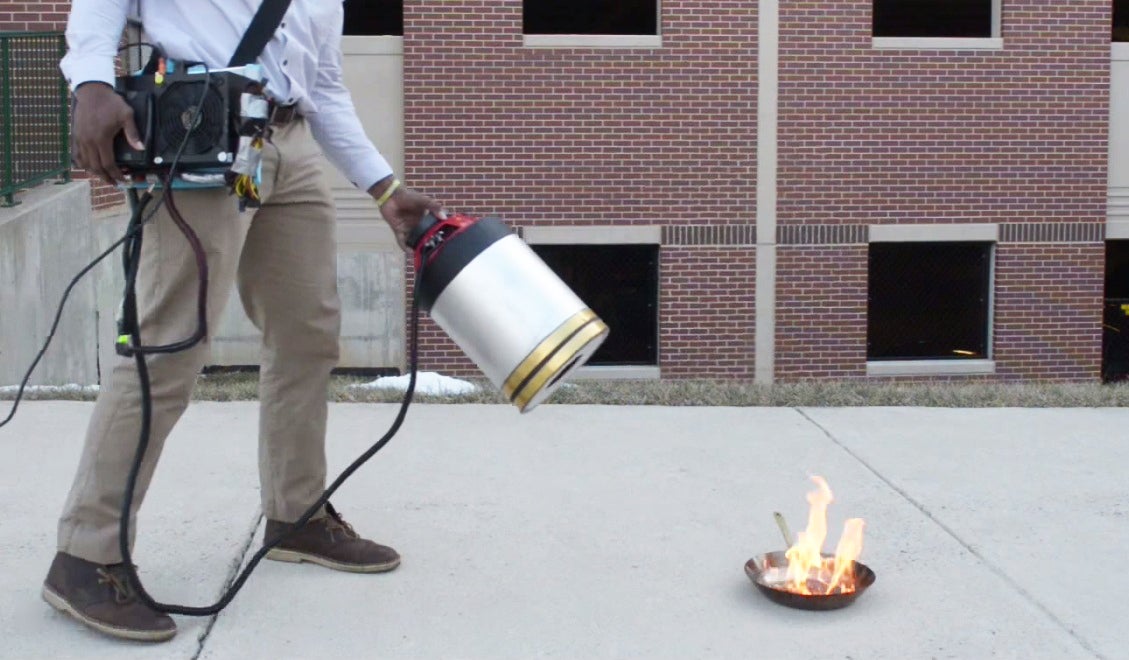This new sound-based fire extinguisher puts out flames by dropping the bass
WOOOOOOOOOOOMP

Your support helps us to tell the story
From reproductive rights to climate change to Big Tech, The Independent is on the ground when the story is developing. Whether it's investigating the financials of Elon Musk's pro-Trump PAC or producing our latest documentary, 'The A Word', which shines a light on the American women fighting for reproductive rights, we know how important it is to parse out the facts from the messaging.
At such a critical moment in US history, we need reporters on the ground. Your donation allows us to keep sending journalists to speak to both sides of the story.
The Independent is trusted by Americans across the entire political spectrum. And unlike many other quality news outlets, we choose not to lock Americans out of our reporting and analysis with paywalls. We believe quality journalism should be available to everyone, paid for by those who can afford it.
Your support makes all the difference.Two engineering students from George Mason University in Virginia have invented a potentially revolutionary fire extinguisher that uses low-frequency sound waves instead of water, gas or foam.
Demonstrated in the video below, the cylindrical device, smaller than many more traditional fire extinguishers, is held about a foot away from flames and immediately snuffs them out.
"I see this device being applied to a lot of things, first off I think in the kitchen," co-creator Viet Tran said.
"But eventually I'd like to see this applied to swarm robots, where it would be attached to a drone and that would be applied to force fires or even building fires where you wouldn't want to sacrifice human life."
Is this the future of fire fighting? Could Skrillex just point his monitors towards forest fires, actually doing some good in the world for once?
Tran and Seth Robertson now hold a preliminary patent application for the device, which the university is describing as "potentially revolutionary".
It is thought to work by increasing of the velocity of the air particles within and surrounding the fire, thus decreasing the surface area of the air at which the fire combusts.
Join our commenting forum
Join thought-provoking conversations, follow other Independent readers and see their replies
Comments